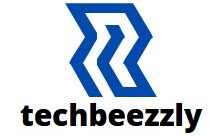
What is ssis 816? If you’re delving into the world of data integration, this term should become very familiar. SSIS stands for SQL Server Integration Services, and version 816 represents one of its latest iterations. It’s a powerhouse tool used for data migration, transformation, and integration. In today’s data-driven world, effective data integration is crucial, making SSIS an invaluable asset.
Overview of Ssis 816
SSIS 816 is a sophisticated data integration tool that simplifies the process of moving data between various systems. Whether you’re dealing with data extraction, transformation, or loading (ETL), SSIS 816 provides a robust framework to handle these tasks efficiently.
Key Features of Ssis 816
SSIS 816 comes packed with features like improved performance, enhanced data transformation capabilities, and better integration options with other Microsoft tools. It also offers advanced debugging and error handling mechanisms, making it easier to troubleshoot and maintain data workflows.
System Requirements
Before diving into ssis 816, ensure your system meets the necessary requirements. Typically, you’ll need a compatible version of SQL Server, sufficient RAM, and adequate storage space.
Installing ssis 816 is straightforward. Begin by downloading the installation files from the Microsoft website. Follow the installation wizard, ensuring you select the Integration Services option during the setup process.
Basic Configuration
Post-installation, some basic configuration is required. Configure the ssis 816 service to start automatically, and ensure you have the necessary permissions to create and manage SSIS packages.
Components of SSIS 816
ssis 816 is built on a modular architecture comprising several key components:
Control Flow: Manages the workflow of tasks.
Data Flow: Handles the actual data transformation and movement.
Event Handlers: Respond to events during package execution.
Data Flow Architecture
The data flow architecture in SSIS 816 is designed to efficiently move and transform data. It includes data sources, transformations, and destinations. Each component is configurable, allowing for precise control over the data processing pipeline.
Control Flow Architecture
Control flow dictates the execution order of tasks within a package. It includes tasks, containers, and precedence constraints, which define the logical flow of operations and manage dependencies.
Building Your First ssis 816 Package
Open SQL Server Data Tools (SSDT) and create a new Integration Services project. This serves as the foundation for developing your SSIS packages.
Designing a data flow involves dragging and dropping components from the toolbox into the data flow designer. Start by adding a data source, then include necessary transformations, and finally, specify the data destination.
Adding and Configuring Data Sources
Data sources are the starting points for data extraction. SSIS 816 supports various data sources including SQL Server, Oracle, and flat files. Configure each data source to ensure it correctly points to the required data.
Advanced ssis 816 Package Development
Variables and parameters are essential for creating dynamic and reusable SSIS packages. Variables store values that can change during package execution, while parameters allow for external configuration of package properties.
Implementing Looping and Conditional Logic
ssis 816 offers looping and conditional logic through tasks like For Loop, Foreach Loop, and Sequence Containers. These help in iterating over datasets or executing tasks based on specific conditions.
Effective error handling and logging are critical for maintaining robust SSIS packages. Use event handlers to capture errors and configure logging to track package execution details.
Data Transformation in ssis 816
ssis 816 provides a plethora of data transformation options. Common transformations include data conversion, data cleansing, and data aggregation.
Using Lookup and Merge Join
Lookup and Merge Join transformations are powerful tools for combining data from different sources. Lookup transformation finds and returns related data from another dataset, while Merge Join combines data from two sorted datasets into a single output.
Data Cleansing Techniques
Data cleansing is vital for maintaining data integrity. ssis 816 includes transformations like Data Quality Services (DQS) and Fuzzy Lookup to identify and correct data quality issues.
Connecting to SQL Server
SSIS 816 seamlessly integrates with SQL Server. Use the SQL Server connection manager to configure connections and extract or load data to and from SQL Server databases.
Integration with Oracle databases is supported through Oracle connection managers. Configure these connections similarly to SQL Server connections, specifying the appropriate connection strings and credentials.
Accessing Flat Files and Excel Spreadsheets
Flat files and Excel spreadsheets are common data sources. ssis 816 includes dedicated connection managers and data flow components for reading and writing to these file types. Optimize SSIS 816 performance by following best practices like minimizing data transformations, using appropriate data types, and reducing the number of database round trips.
Monitoring and Profiling SSIS Packages
Use built-in tools to monitor and profile SSIS packages. Performance counters and logging provide insights into package execution, helping identify bottlenecks.
SSIS 816 supports parallel processing, which can significantly boost performance. Configure tasks to run in parallel where possible, taking advantage of multi-core processors.
Deploying Packages to SQL Server
Deploy ssis 816 packages to SQL Server for execution. This involves building the package, configuring the deployment settings, and using SQL Server Management Studio (SSMS) for deployment. Automate SSIS package execution using SQL Server Agent. Create jobs and schedules to run packages at specified times or in response to specific events.
Managing Package Versions
Version control is crucial for maintaining ssis 816 packages. Use source control systems like Git to track changes and manage different versions of your packages. Secure your SSIS packages by encrypting sensitive data and configuring package protection levels. This ensures only authorized users can access and execute the packages.
Data Encryption Techniques
Implement data encryption to protect sensitive information. ssis 816 supports various encryption methods for data at rest and data in transit. Handle sensitive data carefully within SSIS packages. Use masking, encryption, and secure connection managers to protect data throughout the ETL process.
